The length of cold emails determines whether the reader will read them or not, so this is a crucial question. Making it too small could prevent the reader from learning the necessary information. The reader might become utterly bored if you make it too long due to the lengthy content.
So the question arises How long should a cold email be?
Let’s say you want to prepare a dish. Your required ingredients are at hand. Now, you must use the proper amount of ingredients to create a dish; neither less nor more is acceptable. It would be overcooked if you cooked it for too long, and it would be undercooked and raw if you cooked it for too little time. Therefore, we constantly strive for perfection when we cook and when we write emails.
Usually, your goal should be to use straightforward language that the reader can easily understand while outlining the services or content and including a call to action button. Sending cold emails is ultimately done to generate leads, not to share content. Let’s provide an answer for you.
Table of content
1. How long should a cold email be?
2. Why should cold emails be brief and to the point?
3. How should you structure your short cold emails ?
4. Best practices to write a short cold email
5. Conclusion
6. FAQs
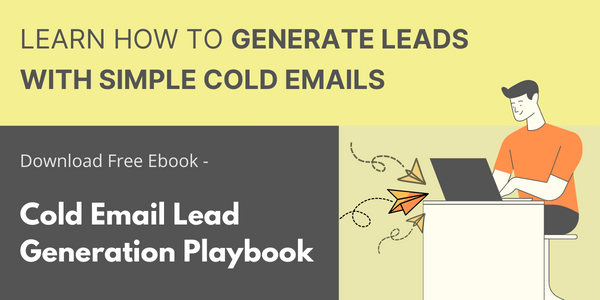
How long should a cold email be?
The ideal length of a cold email can vary based on several factors, including your target audience, the purpose of the email, and the complexity of your message. Boomerang suggests the ideal range of a cold email to be 50-175 words, that is 5-15 lines.
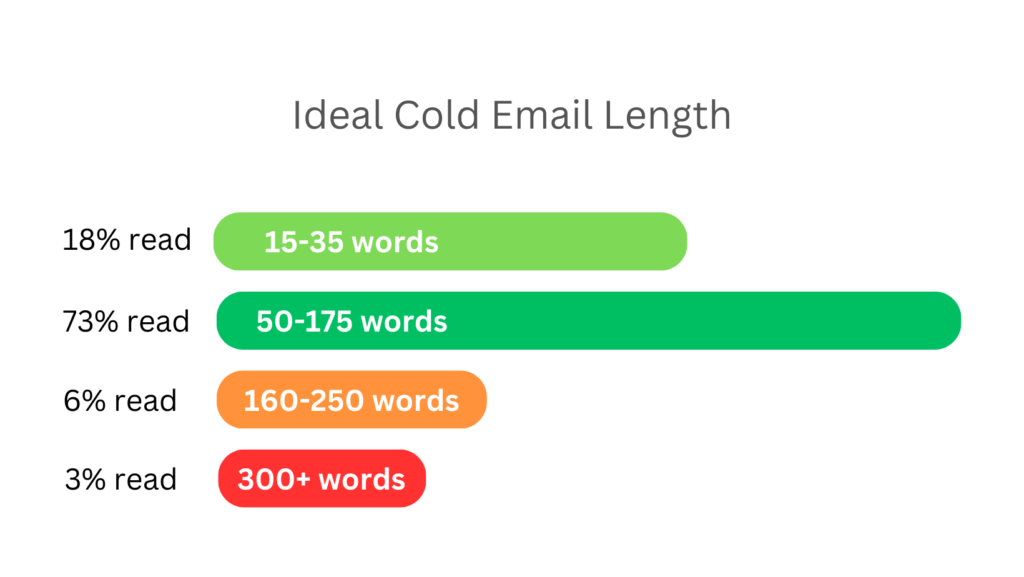
You should remember that cold emails should always be short and simple. Yes, cold emails should not be overly lengthy. The more concise they are, the better. We advise keeping email word counts between 125 and 200 words. Ideally, they should be 150 words. But that’s not all; we’d like to back up our claim.
Here are some reasons why cold emails should be short.
Why should cold emails be brief and to the point?
As the internet age advances, people’s attention spans become shorter. According to the research conducted by Wyzowl, our attention span has shrunk by 31.5%. It was approximately 12 seconds in the year 2000. In the year 2015, it came down to 8.25 seconds.
There are claims that it will fall even further in the coming years. The rise of tiktok and reels and shorts content, as well as a new generation exposed to smartphones and the internet at such a young age, would inevitably result in this.
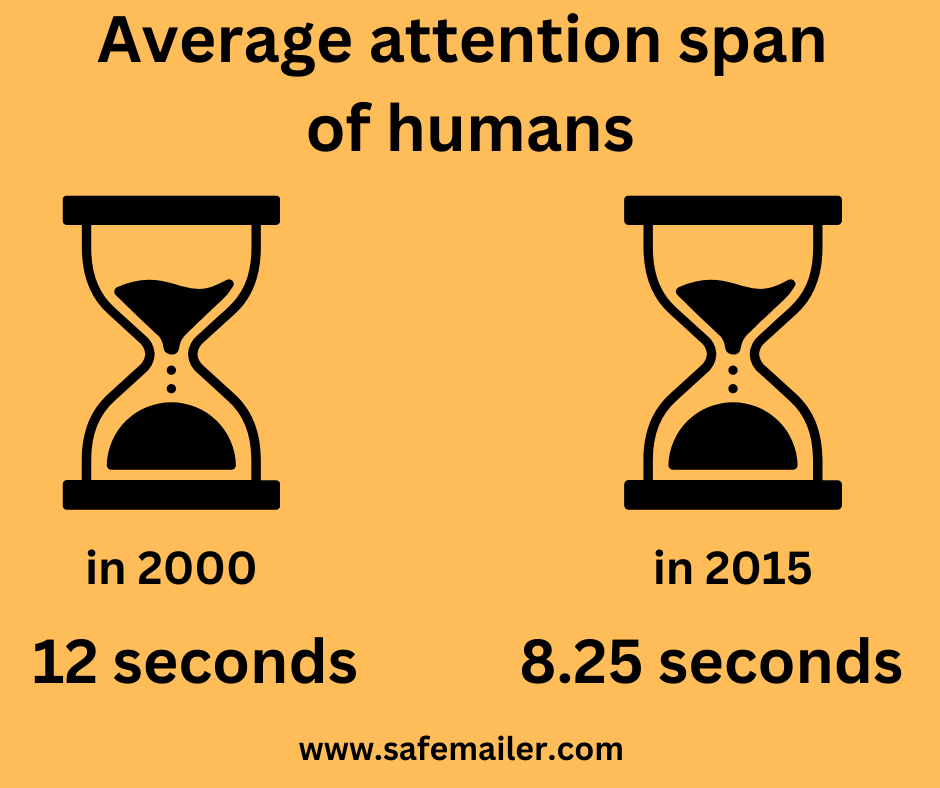
So you only have 8.25 seconds to intrigue the prospect’s interest in you and the services your company offers. So, would you send them a long email or a short one? That is exactly why.
By sending them a short email, you demonstrate that you value not only their time but also their attention spans. Short emails are concise and to the point, so the prospect gets the gist of what you’re saying in less time. Also, because they are brief, the prospect is more likely to read them giving them a better open rate.
However, it should not be too short or too long. The reader should not unsee it through halfway.
Here’s a breakdown of when to keep your cold email shorter and when to make it a little longer.
When to Keep It Longer?
- Complex Offers: If your product or service is intricate and needs a detailed explanation, a longer email may be necessary. This allows you to provide all the necessary information to help the recipient understand the value you’re offering.
- Targeting Warm Leads: When you’re reaching out to leads who have already shown some interest or engaged with your content, you have more leeway for a longer email. These recipients may be more open to learning about your offerings in greater detail.
- Educational Content: If you’re sharing educational content, such as whitepapers, case studies, or reports, a longer email can be appropriate. It provides room for explaining the content’s significance and benefits.
- B2B Sales: In the B2B context, where deals are often more complex and involve multiple stakeholders, longer emails can be used to address specific pain points and solutions comprehensively.
- Establishing Credibility: Longer emails can be valuable for building trust and credibility. You can include information about your company’s achievements, customer testimonials, or case studies to show that you’re a reliable and proven solution.
When to Keep It Shorter?
- Quick Introduction: If you’re reaching out to a busy professional or a high-level executive, it’s often best to keep your cold email short and to the point. These individuals have limited time, and a brief introduction that piques their interest is more likely to get a response.
- Clear and Simple Message: When your message is straightforward and doesn’t require extensive explanation, a shorter email is preferred. If you can convey your value proposition concisely, do so.
- Initial Contact: Short cold emails work well for initial outreach. The goal is to establish a connection and prompt response. You can provide more details in subsequent communications once you’ve piqued their interest.
- Mobile Users: Many people check their emails on mobile devices, where shorter emails are easier to read and digest. Keeping it concise is crucial for mobile responsiveness.
How should you structure your short cold emails?
Now that we’ve determined why cold emails should be kept short, let’s look at how to structure our cold email. One thing that most sales reps must perfect is the format of their short emails.
You must also write enticing and intriguing emails so that the prospect fully understands what you offer. It’s a challenge to be honest. But don’t worry! We can also assist you with this.
There are email templates which show you how you can write your cold emails based on that format. You can also read our blog on email templates here for more info.
Generally your email should include :
Attention getting subject line
Your subject line should be brief, attention-grabbing, and clearly communicate the purpose of your email. It should make the recipient want to open and read your email. For example, “Save Time and Money with Our Innovative Software Solution.”
A greeting
Address the recipient by name if possible. Use a professional salutation such as “Dear Mr./Ms. [Last Name]” or “Hello [First Name]”.
Your name and the name of the organization you work for
Begin by introducing yourself and your organization. Provide a brief overview of what your organization does and its mission. For example, “My name is [Your Name], and I work for [Organization Name].
What does your organization do?
We specialize in #your company’s features#. For example, “providing innovative software solutions that help businesses save time and increase efficiency.”
The prospect’s potential pain point and how you intend to assist them.
Do some research on the recipient before sending the email to identify their potential pain points. Address the prospect’s problem or challenge and how your product or service can help solve it.
For example, “I understand that your business is struggling to manage a large volume of customer data. Our software can help streamline your data management process and save your team valuable time.”
The product or service that you offer
Explain in more detail how your product or service can solve the prospect’s pain point. Provide details such as how it works, its benefits, and how it differs from similar products or services on the market.
Purpose of the email
Clearly state the purpose of your email and what you hope to achieve. This could be setting up a meeting, arranging a product demonstration, or simply asking for a follow-up call.
Any affiliation, license, or partnership worth mentioning [optional]
If your organization has any relevant affiliations, licenses, or partnerships that are worth mentioning, include them briefly. This can help establish credibility and build trust with the recipient.
Signature
Close your email with a professional signature that includes your full name, job title, and contact information. This makes it easy for the recipient to get in touch with you if they have any questions or would like to learn more.
Below is the email template of how to write an email to offer for sales growth.
 |
| Subject: About #a situation# at #Prospect’s company# |
| Hey #Name#, This is #Sales Rep Name# with #Your Company#. I just took a quick look at your website and noticed that #Company# appears to be similar to many of the #Industry# clients we assist on a daily basis. I’m sure you’re already thinking about engagement metrics and ROI by acquisition source, but I’d love to get a sense of how you’re uncovering that data and share some insights we’ve learned along the way to better understand your business. If I’ve got the right person, can we connect in the next few days? If not, who would you suggest I contact? I eagerly await your response. Best, #Signature# |
 |
So in this way, you can keep your email short and sweet but also clear your intentions to the prospect.
Best practices to write a short cold email
1. Write Short Subject Lines
While discovering how long should a cold email be, it is equally important to pay attention to the length of your subject line too.
Keep it concise, typically under 50 characters, and make it compelling. Use action verbs, intriguing questions, or a clear benefit to entice the recipient to open the email. A well-crafted subject line can significantly improve your email’s open rate.
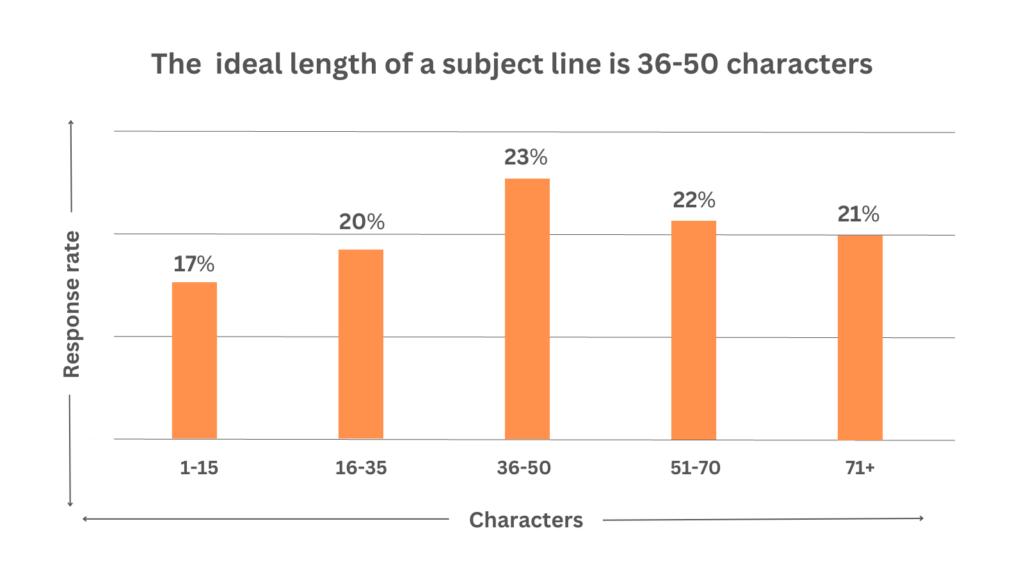
For example, instead of “Introduction,” consider “Unlock Your Growth Potential.”
2. Use Simple English Language
Keep your email’s language clear and straightforward. Avoid jargon, complex sentences, or excessive technical details. Your goal is to quickly convey your message and value proposition.
The recipient should easily understand what you’re offering and why it matters to them.
For example, “Our solution streamlines your workflow for increased efficiency” is clearer than “Our innovative workflow optimization tool enhances operational efficiency.”
3. Ask Questions
Engage the recipient with a question early in the email. Questions can create curiosity and encourage a response. Make sure your questions are relevant to the recipient’s needs or pain points.
This approach encourages interaction and makes the email feel like a personalized conversation.
For example, “Are you struggling to meet your sales targets this quarter?” prompts the recipient to think about their challenges.
4. Present Your Value Proposition
Clearly and concisely convey the value of your product or service in the email. Explain how it can address the recipient’s pain points or fulfill their needs.
Be specific about the benefits they’ll gain by taking action or engaging with your offer.
For example, “Our software can increase your website traffic by 40% in just 30 days” directly communicates the value.
5. A/B Test Your Email Length
A/B testing is a crucial strategy to determine what resonates best with your audience. Experiment with different email lengths and formats to see what yields the highest response rates.
Track open rates, click-through rates, and conversion rates to identify which email variations are most effective.
For example, you can test a shorter email against a slightly longer version to see which one generates more responses.
So to sum it up
The answer to the question “How long should a cold email be?” will be short almost all the time. The ideal length of the email should not be more than 200 words.
And it’s not just for cold emails, even if you question us with “how long should a sales email be?” we would say short as well. But here if you want to explain a few more details you can, but don’t go more than 250 to 275 words.
However, there is no one-size-fits-all answer to the question of how long should a cold email be. It largely depends on your audience, the complexity of your offer, and your specific goals.
With the help of a cold email automation tool like SafeMailer, you can experiment with both short and long emails, and track the results to determine what works best for your campaigns. You can personalize your email accordingly and target your audience.
We at SafeMailer can help you choose the best email templates that are perfect fit and to the point for your business needs.
Safemailer is a cold email marketing software that sends your marketing emails in waves. Instead of sending 1000 emails at once, it sends them over several days, 1-2 minutes apart much like a real human would. Thus it bypasses spam filters.
FAQs
Q. How long should a cold email subject line be?
A: The length of the subject line may vary from desktop to mobile. However, in general, six words are more than enough to pique the reader’s interest.
Q. How long is too long for a cold email?
A: As a general rule, a cold email should be no longer than 2-5 sentences or around 50-125 words in total. If your email is longer than this, it may be too long and risk losing the recipient’s attention. Therefore, it’s essential to keep your message concise and to the point to increase your chances of getting a response.
Q. Is it better to use bullet points or paragraphs in my cold email?
A: Bullet points can help to break up the text and highlight key points or benefits. However, using too many bullet points can make your email look too formulaic and impersonal. Hence, it’s also important to use paragraphs to provide context and convey a more personal tone.

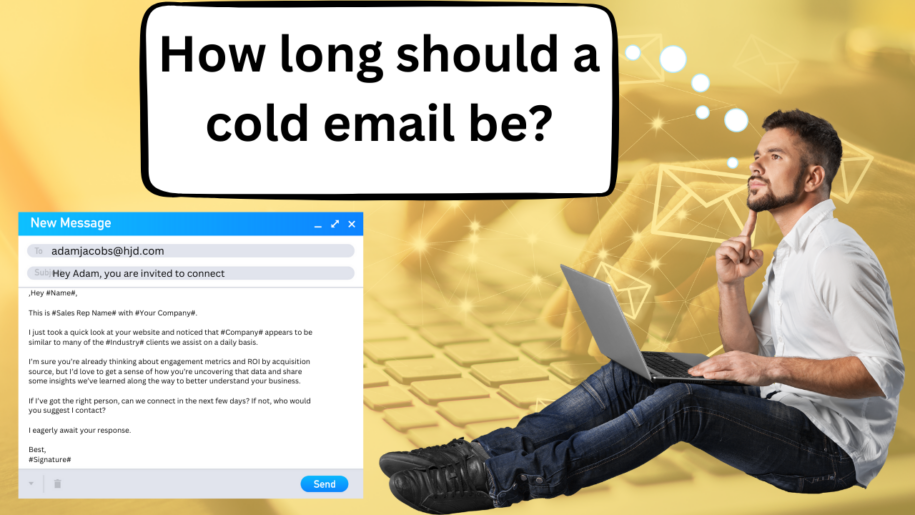
Leave a Reply